Full-Day Early Bird Ta Prohm tour after Sunrise
Experience Ta Prohm, tour Banteay Kdei Temple in the early morning, plus Pre Rup Temple and Ta Som Temple, including fruits before visiting Neak Pean, ending at Preah Khan Temple.
Step into a Timeless Adventure and Experience 6 Angkor Ancient Wonders
Step into the enchanting world of ancient Cambodia with our Full-Day Tour – Early Bird Ta Prohm Tour After Sunrise. This immersive experience takes you on a journey through time, where history and nature intertwine in a mesmerizing dance. As the sun rises, the mystical Ta Prohm temple comes alive, revealing its secrets and stories to those who dare to venture within its walls.
How to book this Early Bird Ta Prohm tour?
The price of this Private Temples Tour varies per group: Select the number of guests in your private group.
The Full-Day Tour – Early Bird Ta Prohm Tour After Sunrise is not just a tour; it’s a once-in-a-lifetime experience. As the first rays of the sun pierce the morning mist, you’ll find yourself at the East Gate of Ta Prohm, ready to explore this architectural marvel as the ancients once did. The early morning light bathes the temple in a golden glow, creating a magical atmosphere that’s perfect for capturing stunning photographs.
Early Bird Ta Prohm tour after Sunrise Highlights: Ta Prohm Temple ▷ Banteay Kdei Temple ▷ Pre Rup Temple ▷ Ta Som Temple ▷ a break and fruits before visiting Neak Pean ▷ Preah Khan
Private Early Bird Ta Prohm Tour After Sunrise | Key Details
The tour is designed for those who crave the extraordinary, who seek out experiences that are far from ordinary. The Full-Day Tour – Early Bird Ta Prohm Tour After Sunrise is not just a tour, it’s a journey into the heart of Cambodia’s rich history and culture.
- Location: Angkor Wat National Park
- Duration: 9 to 10 Hours
- Departure Time: your Hotel lobby: 6:30 AM – 6:40 AM
- Return Time: 4:30 PM (approx.)
- Live Guide: Yes
- Instant Confirmation
- Mobile Voucher Accepted
- Printed Voucher Accepted
- Pick-Up Service: at the Lobby of your Hotel
- This tour/activity is limited to a group size of 9. But if you have a larger party, don’t worry; simply contact us, and we’ll arrange for 2, 3, or even more minivans to be reserved exclusively for your Early Bird Ta Prohm Tour.
- An up-to-date Angkor Pass, now $37 per person, is required to enter these amazing temples. You can buy tickets beforehand, but your tour guide will also help you at the Angkor ticket office.
Early Bird Ta Prohm tour after Sunrise: Our Full-Day Tour – Early Bird Ta Prohm Tour After Sunrise is more than just a sightseeing trip; it’s a journey through time. From the moment you step into the ancient Ta Prohm temple, you’ll be transported back to the era of the Khmer Empire. The temple’s intricate carvings and grand architecture tell tales of a civilization that once thrived in this land.
A Symphony of Temples: The Full-Day Early Bird Ta Prohm Tour After Sunrise doesn’t stop at Ta Prohm. You’ll also visit the serene Banteay Kdei Temple, the majestic Pre Rup Temple, and the intricate Ta Som Temple. Each temple offers a unique glimpse into Cambodia’s rich history and culture. And with a break and fruits included, you’ll have the energy to explore to your heart’s content.
This tour includes a superb native guide + a plush modern minivan (with all the conveniences of home on board), + a break, and fruits.
What to Expect
A Day of Discovery. Expect a day filled with discovery as you explore the ancient temples of Cambodia. Each temple offers a unique glimpse into the past, from the awe-inspiring Ta Prohm to the serene Banteay Kdei and the majestic Pre Rup.
A Feast for the Senses. Prepare for a feast for the senses as you take in Cambodia’s sights, sounds, and tastes. From the intricate carvings of the temples to the delicious flavors of fresh fruits, this tour is sure to delight all your senses.
A Connection with Nature. Experience a deep connection with nature as you explore the temples nestled within the lush Cambodian jungle. The sight of towering trees intertwined with ancient ruins is a reminder of the enduring power of nature.
A Personalized Experience. With our knowledgeable guides, you’ll enjoy a personalized experience tailored to your interests. Whether you’re a history buff, a nature lover, or a photography enthusiast, we’ll ensure your tour is unforgettable.
A Journey to Remember. From the moment the sun rises over Ta Prohm to the final stop at Preah Khan Temple, this tour is a journey to remember. You’ll leave with not just beautiful photos, but also unforgettable memories.
Private Early Bird Ta Prohm Tour pricing
The pricing of the Early Bird Ta Prohm tour after Sunrise:
| Group Size | Price | Group Size | Price |
|---|---|---|---|
| 2 Persons | $138 | 7 Persons | $238 |
| 3 Persons | $168 | 8 Persons | $238 |
| 4 Persons | $188 | 9 Persons | $238 |
| 5 Persons | $188 | 10 Persons | $258 |
| 6 Persons | $188 | 11 Persons | $258 |
| 12 Persons | $258 |
This table clearly shows the price for each group size, making it easy to find your group cost.
Live Guide
A local guide who speaks fluent English and has years of experience.
Private Early Bird Ta Prohm Tour After Sunrise | What’s Included in the Price
✔️ Ideal for evading crowds.
✔️ Fresh fruits at a local restaurant
✔️ Transportation by luxury minivan to and from your hotel.
✔️ Tour guide who is fluent in English.
✔️ Plenty of iced water bottles and crisp, chilled towels.
✔️ Costs imposed by the community at large (aka local taxes).
✔️ Mobile ticket
Private Early Bird Ta Prohm Tour After Sunrise – Hyper Benefits
✅ Experiencing the Sunrise: There’s something truly magical about watching the sunrise over the ancient temples of Cambodia. It’s a moment of tranquility and beauty that sets the tone for the rest of the day.
✅ Exploring Ancient Temples: From the jungle-clad Ta Prohm to the intricate carvings of Banteay Kdei, each temple you visit offers a unique glimpse into Cambodia’s past.
✅ Savoring a Traditional Break with Fruits: After a morning of exploration, there’s nothing better than sitting down to a delicious Fruit fest. It’s a chance to relax, refuel, and experience the flavors of Cambodia.
✅ Learning About Cambodia’s History: Our knowledgeable guides will provide you with fascinating insights into the temples and the civilization that built them. It’s a history lesson like no other.
✅ Immersing Yourself in the Culture: This tour is about more than just seeing the sights. It’s about immersing yourself in the culture, from the food you eat to the stories you hear.
✅ Creating Unforgettable Memories: Whether it’s the sight of the sunrise over Ta Prohm, the taste of your first Khmer dish, or the feeling of awe as you explore Preah Khan, this tour is sure to leave you with memories that will last a lifetime.
What’s Not Included
✘ All gratuities.
✘ Your Angkor temple pass.
Early Bird Ta Prohm tour after Sunrise – What You’ll Do
Embrace the Dawn at Ta Prohm: Begin your Full-Day Tour – Early Bird Ta Prohm Tour After Sunrise with the first light of the day. As the sun rises, the ancient stones of Ta Prohm are bathed in a golden glow, creating a scene of breathtaking beauty. This is a moment of tranquility and awe that you’ll carry with you long after the tour ends.
Uncover the Mysteries of Banteay Kdei: Next, you’ll head to Banteay Kdei, a Buddhist temple known for its intricate carvings. As you explore the temple, you’ll feel a sense of wonder and curiosity. Who were the people who built this temple? What stories do the carvings tell? Our knowledgeable guides will help you uncover the answers.
Marvel at the Architecture of Pre Rup: Your journey continues at Pre Rup, a temple with a unique architectural style. As you climb the temple’s steep stairs, you’ll be rewarded with stunning views of the surrounding countryside. It’s a moment that will take your breath away and leave you with a deeper appreciation for the ingenuity of the ancient Khmer architects.
Discover the Charm of Ta Som: Your morning concludes at Ta Som, a smaller temple with a charm all its own. As you walk through the temple’s corridors, you’ll be struck by the sense of peace and serenity that pervades the place. It’s a fitting end to a morning of exploration and discovery.
Explore Neak Poan and Conclude at Preah Khan: Your adventure continues in the afternoon with a visit to Neak Poan, a temple known for its large pond representing the mythical Anavatapta Lake. The day concludes at Preah Khan, a once bustling city and university temple. As you explore these temples, you’ll be left with a sense of awe and a deeper appreciation for Cambodia’s rich history and culture.
Important Information
Dress Respectfully!
- When visiting old holy sites, please be respectful. Wear a shirt that covers your shoulders, and you may wear trousers or knee-length pants or skirts.
Don’t Forget to Bring
➱ Bring sunscreen to keep your skin safe from the sun!
➱ Bring insect repellent — there are annoying bugs everywhere in Cambodia!
➱ Everyone should bring sturdy and comfy walking shoes, as there are many beautiful treks to take in and around the temples.
Private Early Bird Ta Prohm tour after Sunrise – The meeting point for your tour departure
Private Angkor Thom half-day guided tour
Free Pick-up Service: Meet your driver at your Hotel lobby in Siem Reap.
Start time: 06:30 AM to 06:40 AM.
Drop off back at the Hotel around 4:00 PM.
Know Before You Go
- When you book, you receive a confirmation in your email with your tour e-ticket.
- Wheelchair access is not available.
- The dress code is relaxed and informal. When visiting old holy sites, please be respectful.
- It is advised to bring an insect repellant.
- Please dress appropriately for all weather conditions.
- The tour involves some walking and climbing of stairs, so it is important that participants have a moderate level of fitness. Please inform us before booking if you have any physical limitations or concerns. If you are interested in the private tour that has been by far the most spectacular and the most purchased by our customers, you can visit this page now: Private Angkor Wat special tour
- Accessible for strollers.
- It is not suggested for travelers who have back difficulties.
- This private tour is not appropriate for newborns or very young children. Be sure to take care of that during the tour, as there are several walks to do.
- Travelers should be in good physical condition.
- The rates include any relevant government tax.
- All the rates listed above are net and in US dollars per group.
- The program schedule is subject to change without notice.
- The exact pick-up and drop-off times will be communicated via email.
- Dropping time cannot be guaranteed because it depends on the situation and traffic.
Why small group tours?
It’s the perfect size for a fun group outing but small enough to feel like a cozy home as you go from room to room. No more than ten persons are ever in any of our semi-private gatherings.
All of our client testimonials mention this as a major selling point, so we continue to use this as the maximum number of people in a small group. Our guests have consistently praised our ability to accommodate small groups, therefore we’ve set this as the standard maximum number of participants per booking.
Why Local guides?
Follow in the footsteps of our tour guide. These local experts refer to your stunning tour destination as “home.”
- Get ready, relax and learn about local treasures, folklore, personalities, and historical information!
- Prepare to receive and discover what every other traveler misses when searching and surfing the web.
What is the sanitization policy for the Private Early Bird Ta Prohm tour after Sunrise?
- Travelers and workers can use hand sanitizer.
- Regular sanitization of transportation vehicles.
What precautions are being taken to preserve the health and safety of the staff during the Private Early Bird Ta Prohm tour after Sunrise?
- Checks on the staff’s temperature at regular intervals.
- Staff members experiencing symptoms are eligible for a paid leave of absence.
Get only the Best fro this Top Rated itinerary and all your Insider Tips and Know-How before you go on tour:
The Enchanting Ta Prohm: A Journey Through Time and Nature
A Hidden Gem in the Jungle
Nestled about five miles from the majestic Angkor Wat, you’ll find Ta Prohm, a monastery that whispers tales of ancient civilizations and the relentless power of nature.
This Bayon-style temple complex, swathed in the emerald embrace of the jungle, offers a unique glimpse into the challenges faced by pioneering French archaeologists as they worked to restore the grandeur of Angkor’s temples.
As you wander through the inner courtyards, you’ll find yourself in an otherworldly setting where fig and silk cotton trees, some over 300 years old, have claimed the temple walls as their own. Their gnarled roots, reminiscent of massive arboreal octopi, reach down from the heights, creating a surreal tableau that served as a backdrop for scenes from “Laura Croft: Tomb Raider.”
A Testament to a King’s Devotion
The expansive 150-acre Ta Prohm complex is a testament to the devotion of King Jayavarman VII, who constructed it between the mid-12th and early 13th centuries. This architectural marvel, dedicated to his mother and Buddhism, boasts a grand gate adorned with stone carvings of Buddha faces and intricate sculptures of apsaras.
A Sanskrit inscription, still in place, reveals the temple’s historical significance. It speaks of 3,140 villages and a staggering 79,365 people required to maintain the temple.
The inscription lists an impressive inventory of the temple’s treasures, including golden dishes, diamonds, pearls, precious stones, silk beds, and parasols. While these numbers may have been inflated to glorify the king, there’s no denying that Ta Prohm was a monument of great importance.
A Walk Through Time
Unlike other temples, Ta Prohm has been left largely untouched, save for the creation of visitor paths and structural reinforcements to prevent further deterioration. This decision allows you to experience the awe and wonder that early explorers must have felt upon discovering these monuments in the mid-19th century.
The Battle of Stone and Wood
The temple of Ta Prohm, shrouded in dense jungle, exudes an ethereal charm. Fig, banyan, and kapok trees spread their gigantic roots over stones, prying walls and terraces apart, their branches and leaves forming a natural roof over the structures. This silent battle between stone and wood has been ongoing for centuries, creating a unique blend of destruction and preservation.
The Challenges of Preservation
While the trees add to the charm of Ta Prohm, they also pose significant challenges. Their roots, strong enough to pulverize stone, squeeze between the stones, creating gaps and cracks.
In some cases, the trees push the stone walls to the brink of collapse. However, removing the trees could also lead to the structures’ collapse, as they often act as a binding force, holding the structures together.
The Inhabitants of Ta Prohm
Once home to a troop of monkeys, Ta Prohm’s animal inhabitants fell victim to the Cambodian Civil War. Today, you might spot men hunting birds with slingshots.
The idea of cutting down some trees to preserve the temple has been met with resistance from tour agencies, fearing the loss of the site’s unique charm.
Navigating Ta Prohm
Ta Prohm is among the largest monuments in the Angkor complex. The temple consists of a number of long, low buildings that are all on one level and have rectangular laterite walls surrounding them.
Some inaccessible parts of the temple and others may be reached only through winding, dark corridors. It’s recommended to follow a plan with a route and landmarks indicated or to stay with a guide to avoid gettinglost.
The Central Sanctuary of Ta Prohm
The Central Sanctuary’s bare walls are a fascinating window into the past. Hammering the stone was likely done so that a finish could be applied, such as paint or gilded. Holes that run the entire wall height indicate either wood, stucco, or metal.
For an even more immersive experience, consider joining a guided tour such as the Pre Rup Sunrise Tour or the Journey Through Time and Nature offered by My Siem Reap Tours. These tours will provide you with deeper insights into the history and significance of these magnificent temples.
Remember, the best time to visit Ta Prohm is early in the morning, before the crowds arrive. So set your alarm, lace up your walking shoes, and prepare for an unforgettable adventure in the heart of Cambodia’s ancient history.
Your journey through Ta Prohm will be a journey through time, a testament to nature’s power and human creations’ resilience.
As you leave Ta Prohm, you’ll carry with you the memory of a place where nature and history intertwine, creating a unique tapestry that continues to evolve over time.
Banteay Kdei and Ancient Wonders
The Enigmatic Banteay Kdei
Banteay Kdei, a temple nestled south of Ta Prohm, is a testament to the architectural prowess of King Jayavarman VII. Constructed in 1180 and dedicated to Mahayana Buddhism, this temple is a fusion of Angkor Wat’s grandeur and the Bayon style’s intricate artistry.
The temple’s entrance is a sight to behold, with a colossal dome adorned with four faces, each gazing in a different direction. As you traverse the temple, you’ll notice the exquisite carvings that seem to narrate tales of a bygone era. They are delicate, infrequent, and seem to be designed to add charm to a human dwelling.
The Layout of Banteay Kdei
Banteay Kdei is unique in its layout, situated in front of a large “tank” or lake, with a ritual pool facing the rising sun. The temple has not been restored, allowing visitors to experience its original charm. The temple’s unbalanced layout is due to various changes and additions over time.
The temple was built using soft sandstone, and many of its galleries and porches have collapsed over time. The enclosing wall of the temple was constructed using reused stones.
The Architectural Marvel of Banteay Kdei
The temple was designed as a Buddhist monastery, built on ground level. The original design elements of Banteay Kdei include a Central Sanctuary, a surrounding gallery, and a passageway connected to another gallery. A moat enclosed the original features of the temple.
The temple’s outer enclosure, made of laterite, measures 700 by 500 meters and has four entry towers. A rectangular courtyard to the east, known as ‘the hall of the dancing girls’, is adorned with decorations that include dancers.
The Mystique of Banteay Kdei
The second enclosure’s entry tower is cross-shaped with three passages. The two on either end are connected to the laterite wall of the enclosure, adorned with scrolls of figures and large female divinities in niches.
A causeway, bordered with serpents, leads to the entry tower of the third enclosure. It comprises a laterite wall and includes a gallery with a double row of sandstone pillars that open onto a courtyard.
The Libraries of Banteay Kdei
Two libraries open to the west in the courtyards on the left and right of the causeway. These libraries are a testament to the intellectual pursuits of the ancient Khmer civilization.
A Journey Beyond Banteay Kdei
For a more immersive experience, consider embarking also on a Pre Rup Sunrise Tour or a Journey Through Time and Nature.
But this tour experience you are reading, and contemplating to buy rith now, offers a unique opportunity to explore the rich history and natural beauty of Siem Reap.
Banteay Kdei is a timeless testament to the architectural prowess of the ancient Khmer civilization. Its intricate carvings, unique layout, and serene surroundings make it a must-visit destination for anyone visiting Siem Reap.
Srah Srang: The Royal Bath of Angkor
Across the road from the east entrance of Banteay Kdei, you’ll find Srah Srang, a majestic lake stretching 700 by 300 meters. This elegant landing terrace of superb proportion and scale was constructed in the Bayon-style by King Jayavarman VII at the end of the 12th century. Dedicated to Buddhism, Srah Srang is a sight to behold, always filled with water and surrounded by lush greenery.
The Romantic Aura of Srah Srang
Despite its common name, Srah Srang, or the “Royal Bath,” is not merely a body of water. Love and spirituality find common ground here. A visitor speculated that Srah Srang was a chapel dedicated to Kama, the God of Love. The setting would be fitting for the temperament of the weird power, terribly strong yet tender, of that desire which sweeps away kingdoms, empires, and entire worlds but makes its home in the most meager of abodes…That love might inhabit this peaceful nest submerged in water… suggested that love had visited there once and left a piece of himself behind when he departed.
The Architectural Marvel of Srah Srang
Srah Srang’s architectural splendor is on full display at the pond’s approach platform. The cross-shaped platform is made of laterite and sandstone molding, and it features snake balustrades and two lions on either end. A massive Garuda atop a three-headed serpent guards the entrance. A mythical monster with a stylised tail adorned with miniature serpent heads and the lower half of a Garuda may be seen at the back. The serpent’s carcass is propped up on a dais by fabled beasts.
The Mystique of Srah Srang
Srah Srang is an impressive example of ancient Khmer architecture and a fascinating and mysterious site. A cemetery covering 1600 square meters was found in the northwest part of the reservoir. The discovery of cremation urns and other relics dating back to Udayadityavarman II’s reign further adds to the mystery of an already intriguing location.
With its romantic aura, architectural grandeur, and historical significance, Srah Srang is a must-visit destination for anyone visiting Angkor. Whether you’re a history buff, an architecture enthusiast, or simply a traveler looking for a serene place to unwind, Srah Srang offers an experience like no other.
The Majestic Pre Rup
Step into the realm of the ancient Khmer kingdom and experience the grandeur of Pre Rup, a temple that stands as a testament to the architectural prowess of the 10th century Khmer civilization. The illustrious King Rajendravarman II created this temple, which is a marvel of brick, laterite, and sandstone construction that has withstood the test of time.
The Architectural Marvel that is Pre Rup
Pre Rup, often referred to as the ‘City of the East’, is a temple mountain that showcases the perfect blend of architectural balance, scale, and proportion. Its pyramid-like structure, adorned with five shrines and a series of steep stairways, offers a panoramic view of the vast plains that once were irrigated by the East Baray.
A laterite wall encircles the platform that makes up the temple’s outer enclosure, which measures 127 by 116 meters. Inside this enclosure, you’ll find two groups of three towers, each group aligned north to south. The middle tower in each group dominates the landscape, standing taller and more developed than the others.
The Mysteries of Pre Rup
The name Pre Rup, which translates to “turn the body”, is believed to have funerary associations. The enormous vat at the bottom of the east stairs leading to the center area has been speculated to have been used for cremation ceremonies by archaeologists. The cause for this correlation, however, is unclear.
The Grandeur of the Central Towers
The five central towers on the top platform, open to the east, are a sight to behold. Each tower has three false doors made of sandstone and is sculpted with figures and plant motifs. Traces of plaster can still be seen on the tower in the southwest corner. The figures at the two west towers are feminine, while those at the east and central towers are masculine, adding to the intriguing symmetry of the temple.
A Glimpse into the Past
Pre Rup offers more than just a visual treat. It’s a journey back in time, a glimpse into the rich history and culture of the Khmer civilization. From the intricate carvings on the towers to the long galleries running along each side, every aspect of the temple tells a story of the past.
So, are you ready to explore the grandeur of Pre Rup and experience a slice of history that’s as captivating as it is intriguing?
Remember, the warm tones of the temple’s brick and laterite construction are best seen early in the morning or when the sun is setting.
Ta Som: A Hidden Gem in the Angkor Wat Grand Circuit
Step into a world where history and nature intertwine, where the ancient stones whisper tales of a bygone era, and where the roots of giant trees hold firm to their centuries-old secrets. Welcome to Ta Som, a temple that might be small in size but is colossal in its charm and allure.
The Enchanting Tale of Ta Som
Ta Som, built by order of King Jayavarman VII, attests to the magnificence of Bayon era architecture. The fascinating Dharanindravarman II Buddhist Temple was built in honor of the king’s father.
Its allure stems not only from its historical significance but also from the way the World Monuments Fund (WMF) has lovingly restored it. From 1998 to 2007, the WMF embarked on a mission to breathe new life into this ancient structure.
Today, Ta Som stands as a testament to their efforts, with nearly every part of the temple accessible to visitors.
The Architectural Marvels of Ta Som
Ta Som is a labyrinth of ancient wonders waiting to be explored. Four carved faces, each of which is looking out in a different cardinal direction, greet you as you enter the main entry tower.
The path then leads you through a second entry tower and into the inner enclosure, where the main tower stands tall and proud.
The inner enclosure, constructed from laterite, features sandstone galleries and pavilions.
As you make your way towards the central sanctuary, you can choose to explore the courtyard or head straight through to the other side.
Here, one of Ta Som’s most iconic sights is a large tree with roots growing through the east entrance building.
Why Should Ta Som Be on Your Itinerary?
Ta Som may not be as grand as Angkor Wat or as famous as Bayon, but it holds its own unique charm. Its well-preserved structures offer a glimpse into the artistic prowess of the ancient Khmer civilization.
The tree growing through the east entrance building provides a stunning photo opportunity, a perfect memento of your visit.
Moreover, Ta Som’s location on the Angkor Wat Grand Circuit makes it a convenient stop for those exploring the other temples in the area.
Whether you’re a history buff, an architecture enthusiast, or simply a traveler seeking unique experiences, Ta Som is a destination that’s sure to enchant and inspire.
Neak Pean: The Healing Waters of Angkor
Imagine stepping back into the 12th century, a time when the Khmer Empire was at its zenith.
You are in the center of Angkor, which is home to a complex network of temples and barays (reservoirs).
Among these architectural marvels, one stands out – Neak Pean, a unique island temple with a fascinating history and purpose.
The Serpent-Entwined Temple
Neak Pean, or “The Entwined Serpents,” is a testament to the grandeur of King Jayavarman VII’s reign.
The temple’s name is derived from the intricate sculptures of serpents, or Nagas, that coil around the temple’s base. These serpents are Nanda and Upananda, two Nagas traditionally associated with Lake Anavatapta, a mythical lake in the Himalayas believed to possess curative waters.
The Healing Pools of Neak Pean
Neak Pean was not just a temple; it was a hospital.
The ancients believed that bathing in the temple’s four interconnected pools would balance the elements within the bather, thereby curing diseases.
Each of the four pools, named for the elements they represent—Water, Earth, Fire, and Wind—is linked to the main tank via a stone duct.
The Central Sanctuary and Its Symbolism
At the center of Neak Pean, you’ll find a statue of Balaha, a form of the bodhisattva Avalokitesvara, depicted as a horse.
This statue symbolizes the prevention of drowning, a nod to the temple’s association with water and healing.
The central sanctuary was originally dedicated to Avalokitesvara, further emphasizing the temple’s Buddhist roots.
The Architectural Marvel of Neak Pean
Neak Pean is a marvel of Khmer architecture.
- The temple is located in the middle of Jayatataka Baray, the final baray a Khmer king built around Angkor.
- The central temple sits at the axis of a cross or lotus pattern of eight pools, creating a visually stunning layout that is as functional as it is beautiful.
The Legacy of Neak Pean
Today, Neak Pean continues to captivate visitors with its unique design and purpose.
While its healing waters may not cure modern ailments, the temple offers a glimpse into the past, revealing the ingenuity and beliefs of the Khmer Empire.
Whether you’re a history enthusiast, architecture lover, or simply a curious traveler, Neak Pean is a must-visit on your Angkor itinerary.
Preah Khan: The Majestic Temple of the Holy Sword
Welcome to the world of ancient temples, where history and nature intertwine in a mesmerizing dance. Today, we’re stepping into the realm of Preah Khan, a temple complex that stands as a testament to the grandeur of the past.
Preah Khan, translating to “Holy Sword” in Khmer, is a gem nestled within the Angkor Archaeological Park. This temple complex, largely unrestored, is a silent witness to the victories of Jayavarman VII against the invading Chams in 1191. Imagine the triumphant king, standing tall, his sword gleaming in the sunlight, a symbol of his victorious battle.
The Grandeur of Preah Khan
Preah Khan is not just a temple; it’s a sprawling complex stretching over 56 hectares, enclosed within a moat. Its surface area is a staggering 800 meters by 700 meters. The temple complex is akin to its famous neighbor, Ta Prohm, with nature reclaiming its space, trees and vegetation seemingly swallowing the ruins.
Getting There: An Adventure in Itself
Preah Khan is a part of the Grand Circuit within the Angkor Archaeological Park. This 26-kilometer loop is an extension of the small circuit. To access this temple and tour the rest of the circuit, a tuk-tuk ride is recommended. The smaller circuit can be completed by bicycle, but the larger circuit can be a bit challenging to accomplish in one day on a bicycle.
The Jayatataka Baray: A Sight to Behold
To the east of Preah Khan lies the Jayatataka Baray, a man-made reservoir that mirrors the beauty of the surrounding temples and jungle. In the heart of this reservoir, an island houses the Neak Pean temple. Once dried up, the Jayatataka Baray is now brimming with water, its surface shimmering under the Cambodian sun.
The History of Preah Khan: A Tale of Honor and Glory
Built in the 12th century by King Jayavarman VII, Preah Khan was more than just a temple. It was a city, a temple, and a Buddhist university, all rolled into one. The temple was built to honor Jayavarman’s father, King Dharanindravarman II.
The Preah Khan Stele: A Window into the Past
The Preah Khan Stele, discovered in 1939, is a treasure trove of information about the history of Preah Khan. This 2-meter by 0.6-meter carving features inscriptions on all four sides, revealing intriguing details about the temple city, including its population and the treasury of the Kingdom.
The Architecture of Preah Khan: A Testament to Ancient Craftsmanship
Preah Khan’s architecture is a sight to behold. The outer wall is adorned with five-meter-tall Garudas, frozen in battle with Naga snakes. The complex consists of four enclosures, each with its unique features, from the Hall of Dancers to the inner sanctuary adorned with Buddha images.
For a more immersive experience, you can also consider taking the Angkor Wat Grand Loop Tour (Or the “grand circuit”, as they call it in all the rest of the sites that enjoy copying each other) taking this private tour to explore the grandeur of Preah Khan and other temples within the Angkor Archaeological Park.
In the Full-Day Early Bird Ta Prohm Tour After Sunrise, you’ll not only witness the breathtaking beauty of Cambodia’s ancient temples at dawn but also immerse yourself in the country’s rich history and culture.
From the jungle-clad Ta Prohm to the intricate carvings of Banteay Kdei, from the unique architecture of Pre Rup to the serene charm of Ta Som, every moment is a step back in time.
A day of exploration and discovery that’s truly unforgettable.
So, are you ready to step into a timeless adventure?
Sources:
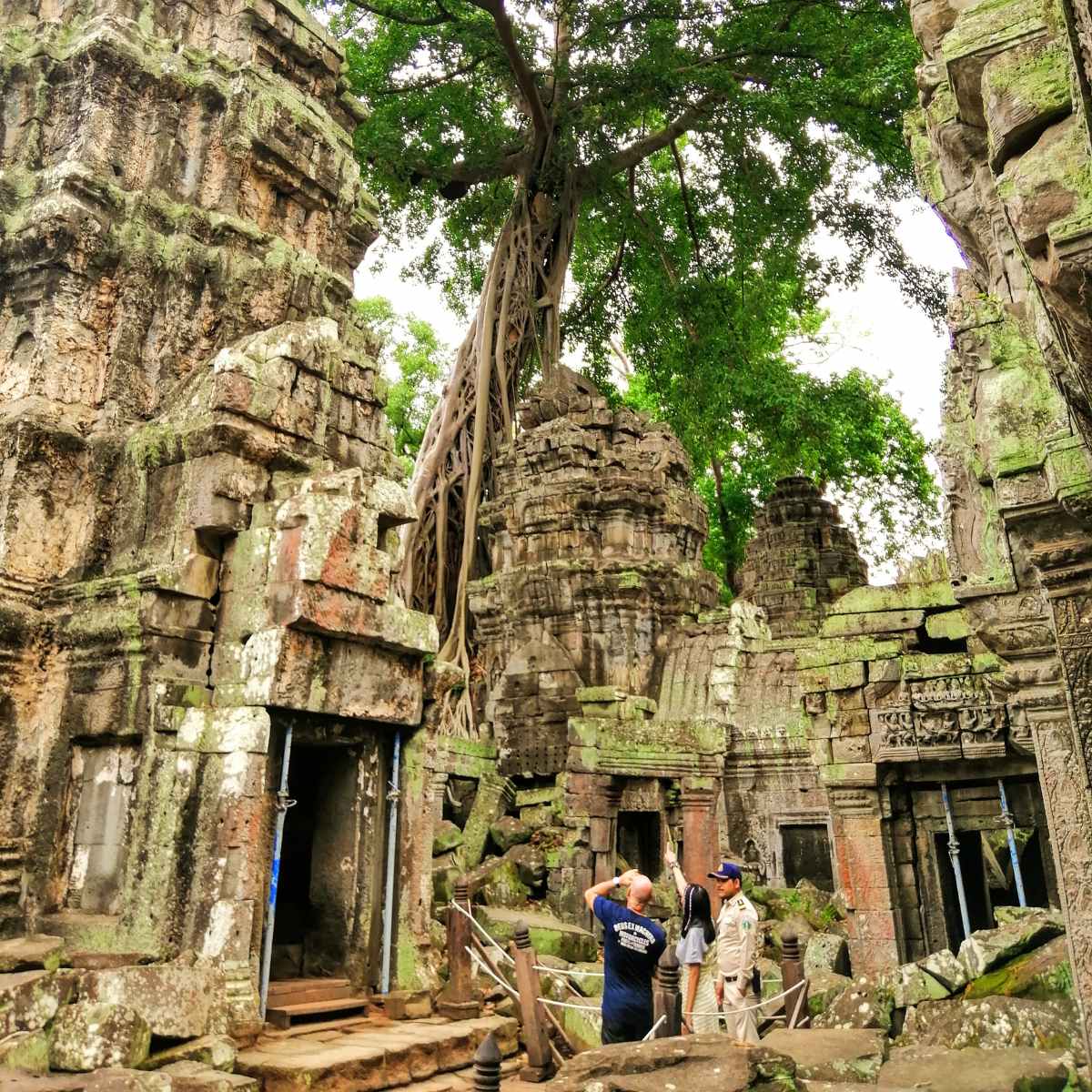
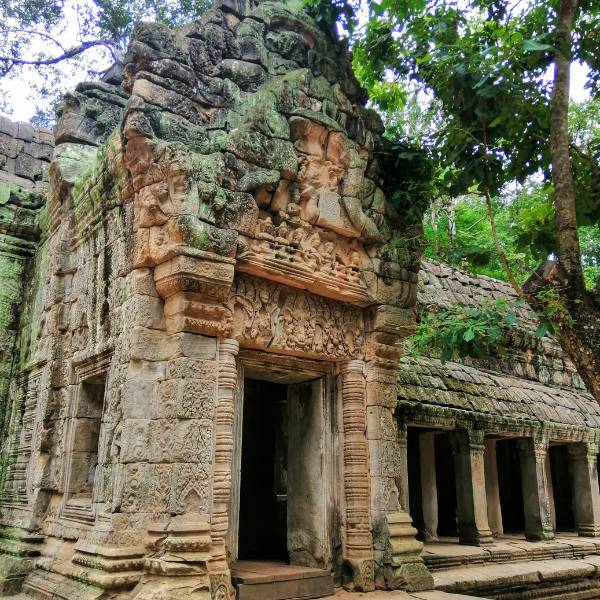
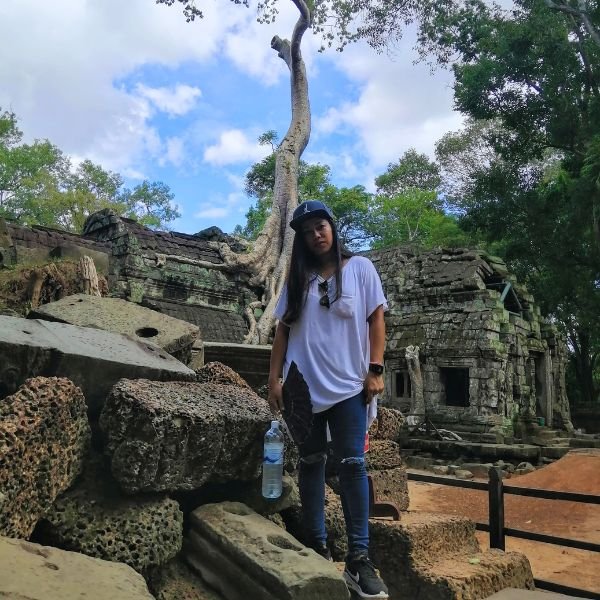
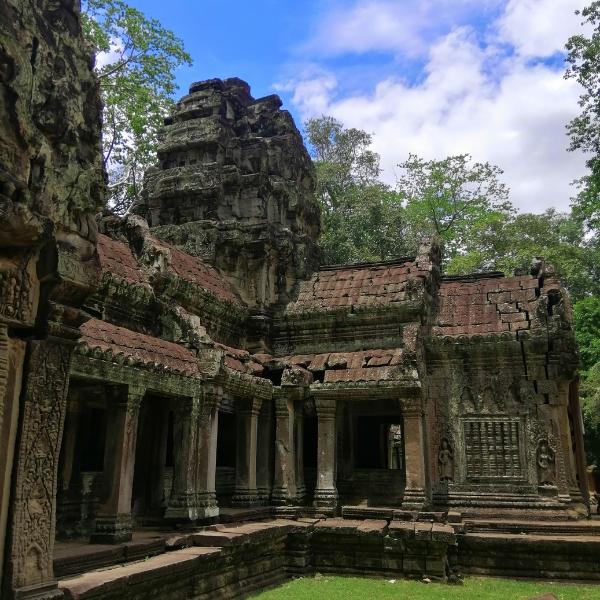
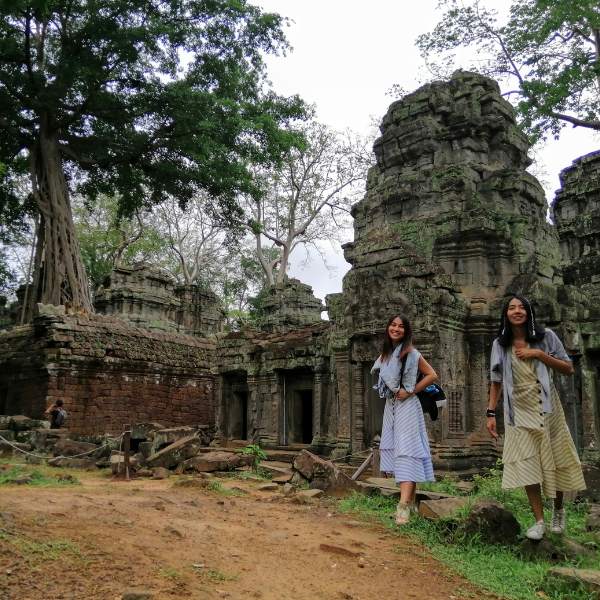
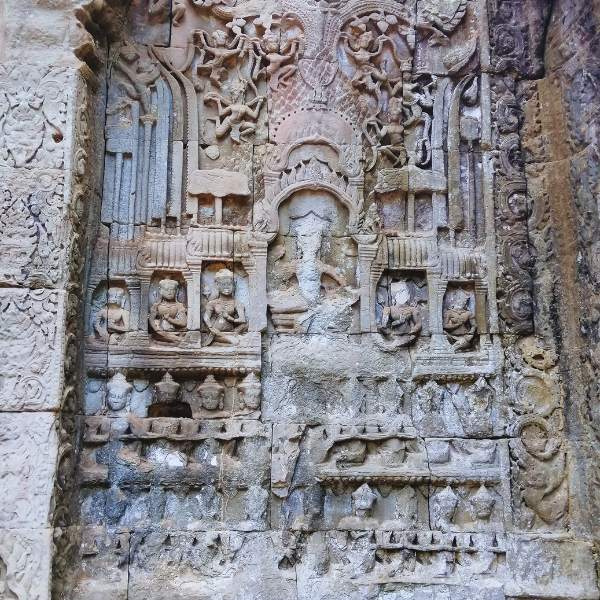
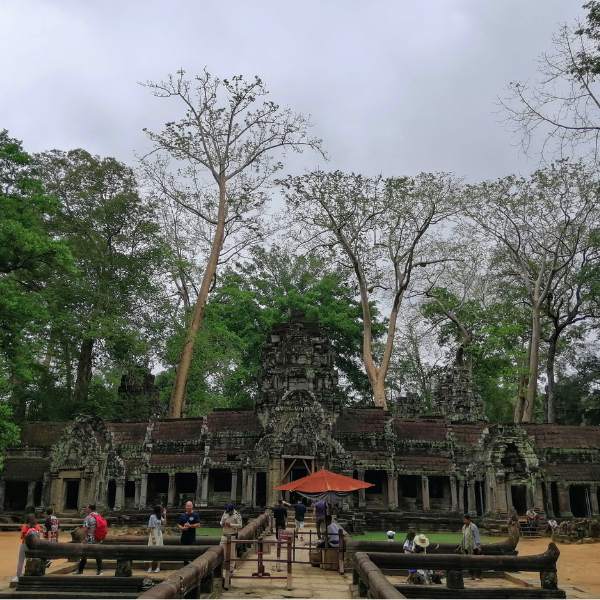
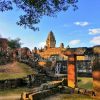
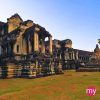
![Morning Siem Reap floating village tour [Siem Reap Kampong Phluk guided tour]](https://mysiemreaptours.com/wp-content/uploads/2022/09/Morning-Siem-Reap-floating-village-tour-Siem-Reap-Kampong-Phluk-guided-tour-600x600.jpg)
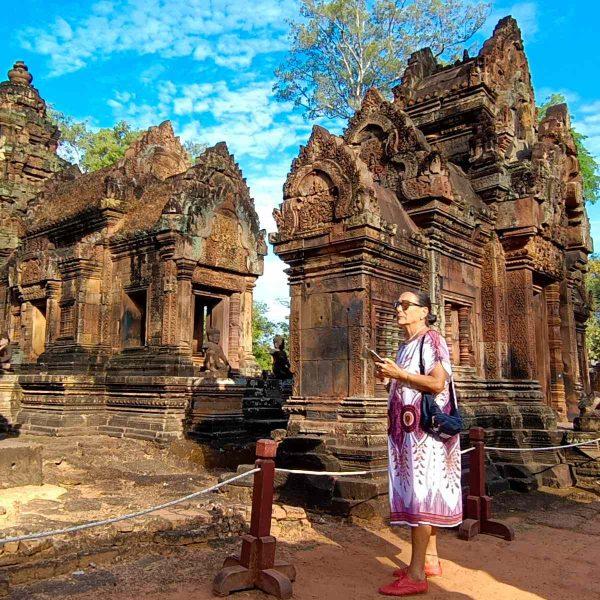
![1-day Angkor Wat GRAND LOOP Private tour with air-con minivan [with the famous Banteay Srei temple] at Preah Khan Temple entrance - front view](https://mysiemreaptours.com/wp-content/uploads/2022/10/1-day-Angkor-Wat-GRAND-LOOP-Private-tour-with-air-con-minivan-with-the-famous-Banteay-Srei-temple-at-Preah-Khan-Temple-entrance-front-view-600x600.jpg)
Reviews
There are no reviews yet.